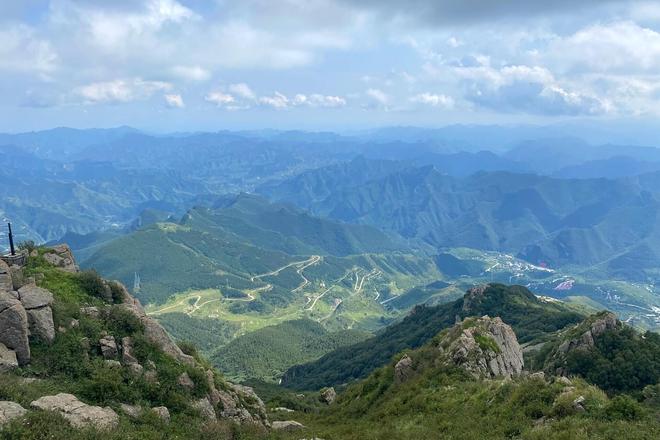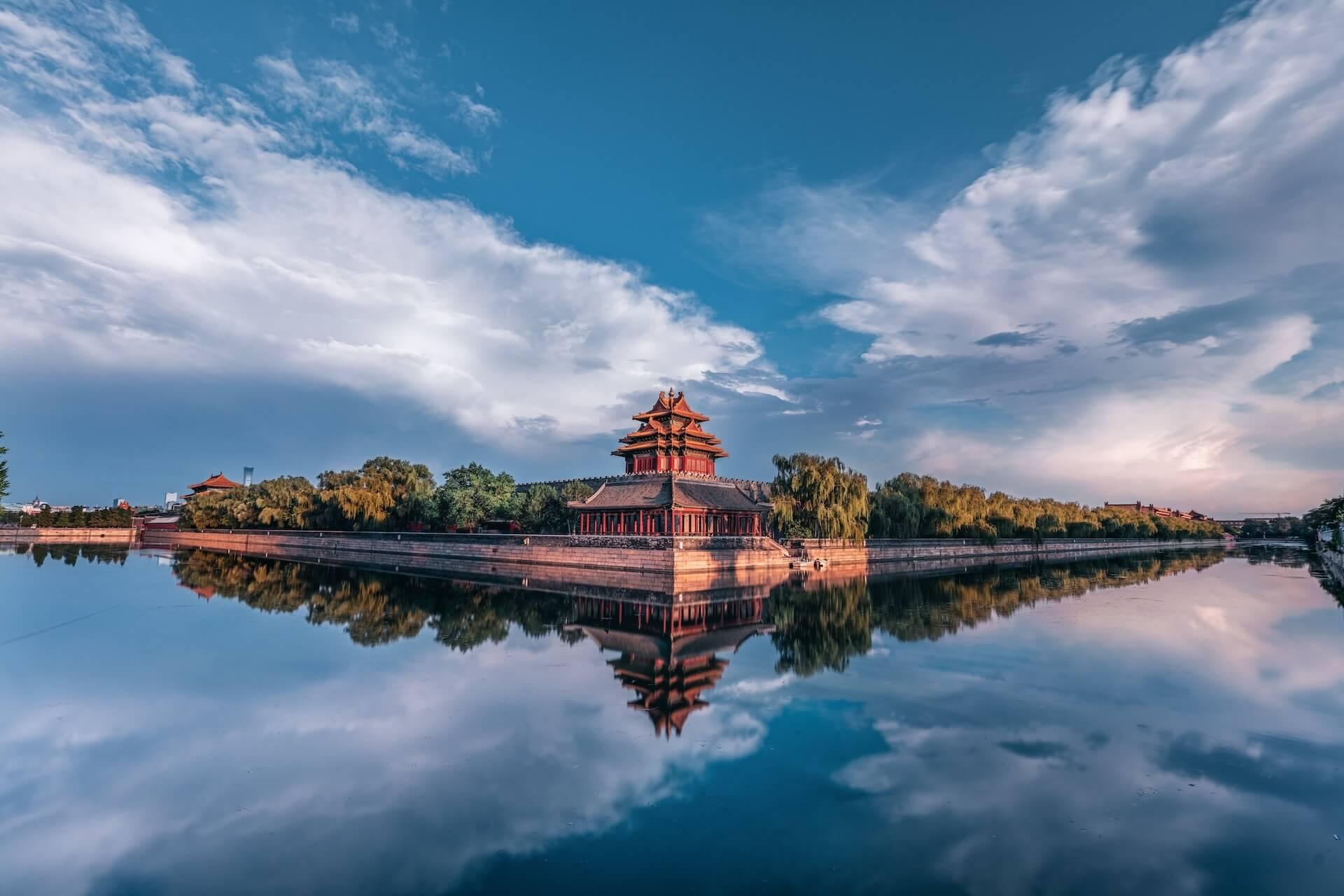Just under 20 million people currently live in China's capital city. This fact alone suggests that it is an incredibly crowded city with a distinctive atmosphere that is hard to experience elsewhere. Even so, Beijing has its own beauty, which can be found not only in its various temples, but also in nature. Join us for a look at the interesting places in Beijing that you shouldn't miss when you visit.
Weather and transportation
You may be surprised to know that this is a relatively cold city, where the average annual temperature reaches only eleven degrees and where you can experience really cold winters. In summer, on the other hand, the city turns into a hot and humid hell. If you want to explore Beijing in peace, ideally head here in autumn: September or October.
But the weather itself won't bother you as much as the omnipresent smog, which is the result of not only the growing motor traffic but also, for example, the factories and power stations around the city. Despite all efforts to mitigate air pollution, the situation is far from ideal, and after a few days in the city you may find yourself wearing a smog mask over your mouth all the time.
Despite these pitfalls, Beijing is a city with a rich history and many interesting sights. A slight complication when exploring Beijing is the huge size of the metropolis. Before we can get to all the sights, we first have to walk miles and miles of boulevards, hundreds of metres wide, filled with cars and buses. The fastest transport in the city is of course the metro, with only two underground lines so far. But there are hundreds of bus lines. On the main ones, long-wheeled articulated monsters flow at minute intervals. Interestingly, they are often chauffeured in an exemplary manner by young female drivers.
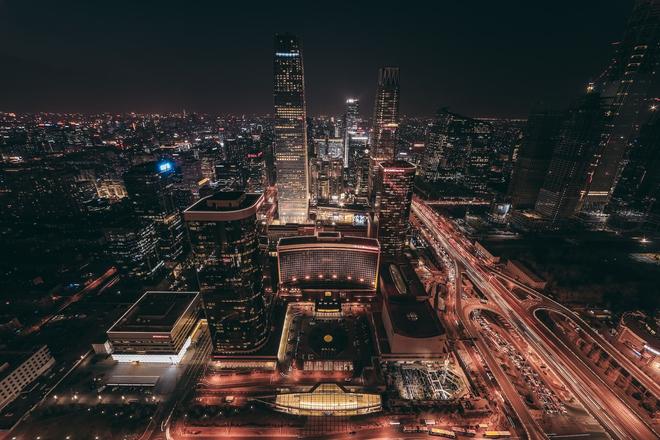
Lost city – Gugong
The basic backbone of the city is the line from south to north formed successively by the Temple of Heaven, Tian'anmen Square, the Forbidden City and Jingshan Park, and finally the Drum and Bell Tower in the north. The famous Forbidden City was built in the 15th Century as an imperial residence, which means that only the emperor and his retinue had access to it; common man did not gain access for five centuries. Old legends claim that there are 9,999 rooms in the costly complex.
What we can admire today in the Forbidden City is only a remnant of its original richness. In addition to fires and theft, the Kuomintang government is responsible for the loss of the monuments. On the eve of the Sino-Japanese War (which broke out in July 1937), it had the most valuable exhibits selected, packed and shipped away. Crates of them filled an entire train, which then travelled with the Kuomintang government to the west and then back to the east after the end of the war. Before the objects could be returned to their original location, however, the civil war broke out and proved fatal to the Kuomintang. The Kuomintang government fled to Taiwan, and the train carrying the valuables from Gugong travelled there with it.
Today, in a suburb of Taiwan's capital, Taipei, there is a magnificent modern museum built specifically as a repository for the national treasure taken from Beijing's Gugong. It has been superbly cared for, but has become a collection of inanimate stolen objects that, while valuable in their own right, have lost the atmosphere of their original setting. It has remained in Beijing. That is why the Beijing Gugong, despite its adversity, is a unique cultural relic of paramount importance.
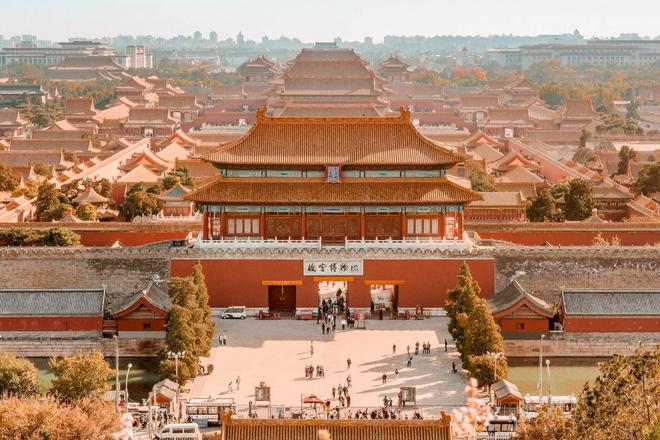
Temple of Heaven
The famous Temple of Heaven is located in the southern part of central Beijing. It is a great example of traditional Ming architecture. It is surrounded by a 267-hectare park covered with 4,000 cypress trees, where you can observe Chinese people resting, exercising and dancing.
The temple was originally used by emperors to worship Heaven as the supreme deity and to offer sacrifices for good harvests. Everything in this temple has a certain symbolism, and its architecture reflects the old Chinese idea of a square earth and a round heaven.
The central hall of the Temple of Heaven is a 38 m high structure with a diameter of 30 m. It is built of precious woods without a single nail. The original structure dates back to 1420, but it burned down in 1889. A new one was built a year later exactly as it was originally. The four columns in the centre represent the four seasons, the other 12 columns symbolise the 12 months of the year and the second row of 12 columns represent the 12 two-hour periods, the basic unit by which time was measured in ancient China.
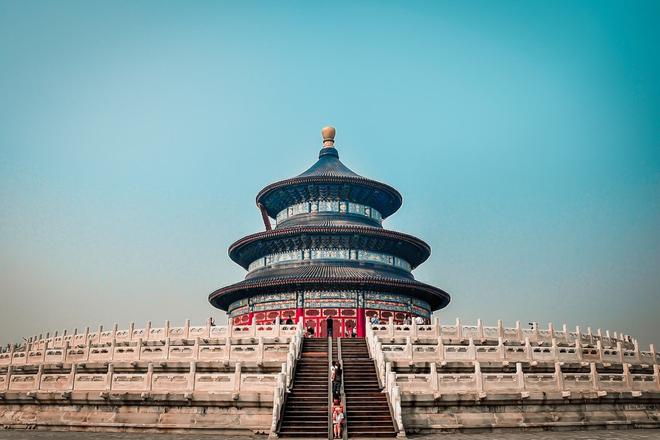
The big city in a different way
But Beijing is more than just monuments and wide boulevards. You'll soon fall in love with its hutongs. Despite the ongoing demolitions in the centre, there are still plenty of them, forming pleasant islands with an atmosphere of ordinary life. Most of the streets are off-limits to cars, so pedestrians and cyclists weave in and out, you'll find the popular cyclists' rickshaws, the smells from the many eateries and restaurants are omnipresent, vendors of all sorts of things have their little shops, old people sit around playing board games, children and adults play badminton, and many people just chat on the doorsteps of their houses. Sometimes it is possible to peek into the small enclosed courtyards that belong to the local houses.
In the woods at the weekend
The grounds of Fragrant Mountain Park are located in the northwestern suburbs of Beijing, not far from the famous Summer Palace. The park is part of a larger natural site called the Western Mountains – Xishan. The entire Fragrant Mountains area is a popular weekend destination for tourists from Beijing, as it is the closest real forest around the city.
The most popular place in the Fragrant Mountains is the peak of Burning Incense, from where, in good weather (if the view is free of clouds and smog), you can see almost the whole of Beijing in the distance. There are many gazebos, temples and pagodas scattered among the trees, the most famous and most notable of which is the Temple of the Azure Clouds, whose architecture displays Indian influence. The temple was originally built in 1366, and among its interesting features is that the coffin of Dr. Sunyatseen, the founder of the Republic of China in 1911, was housed here until 1925, before it was moved to Nanjing.
